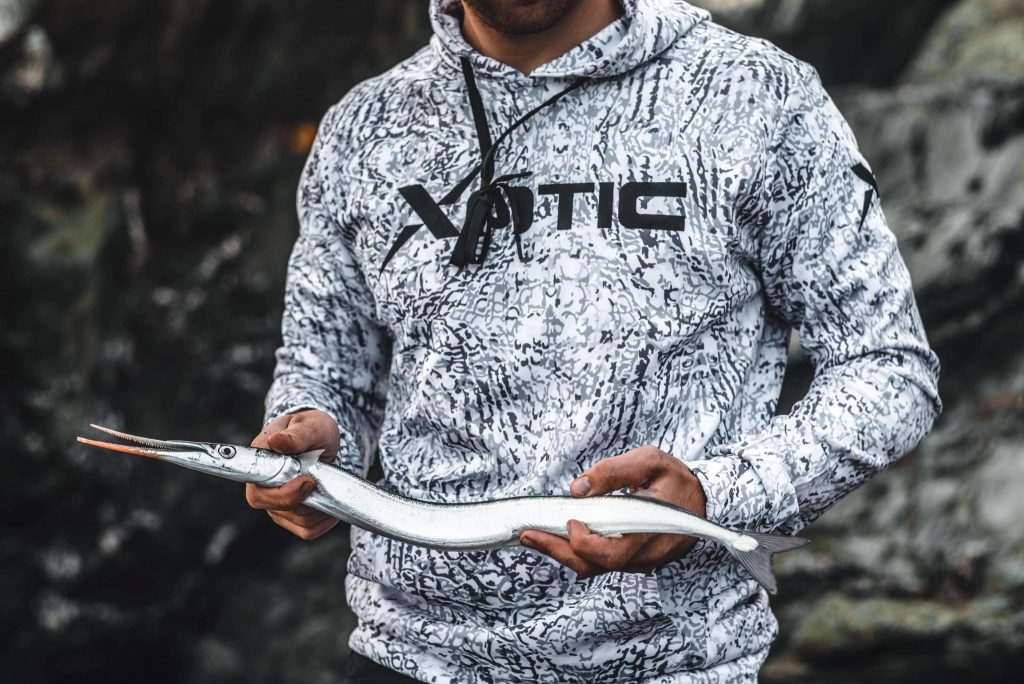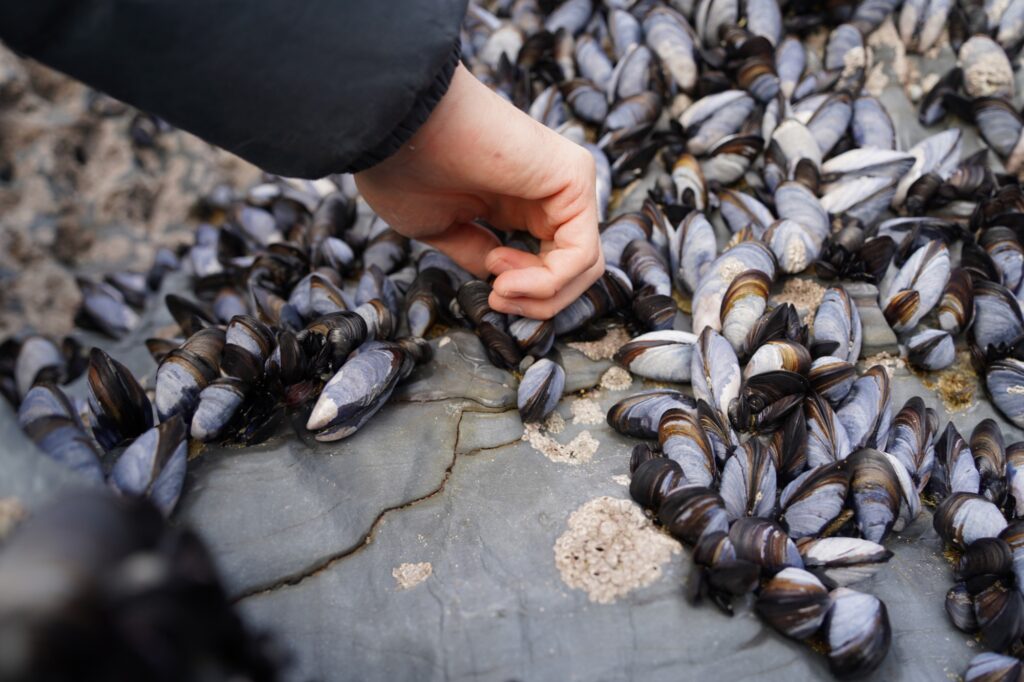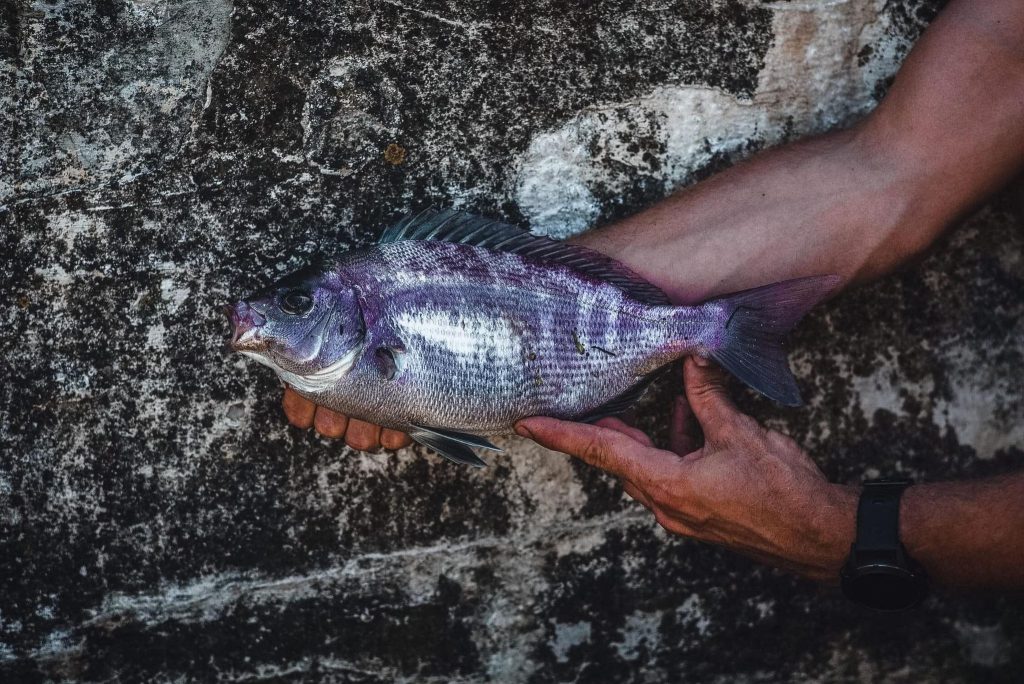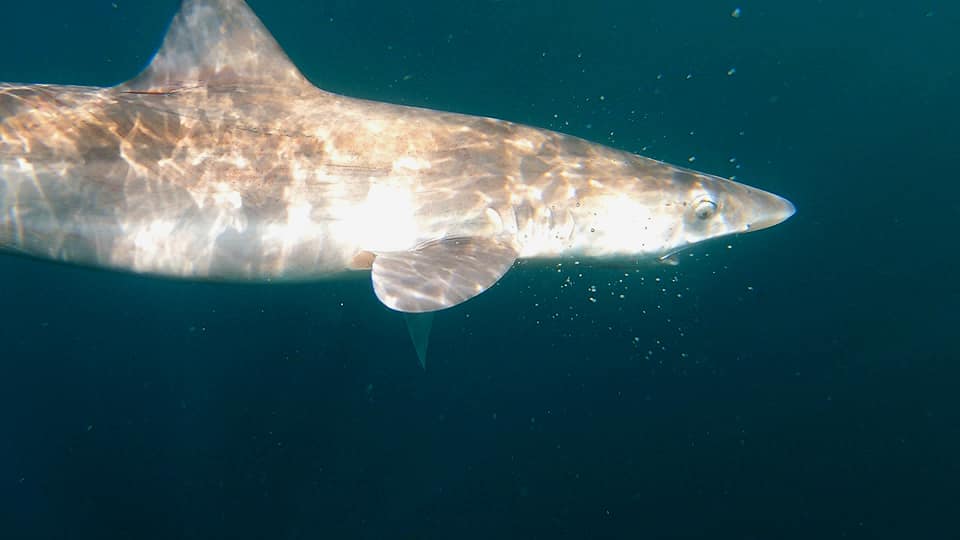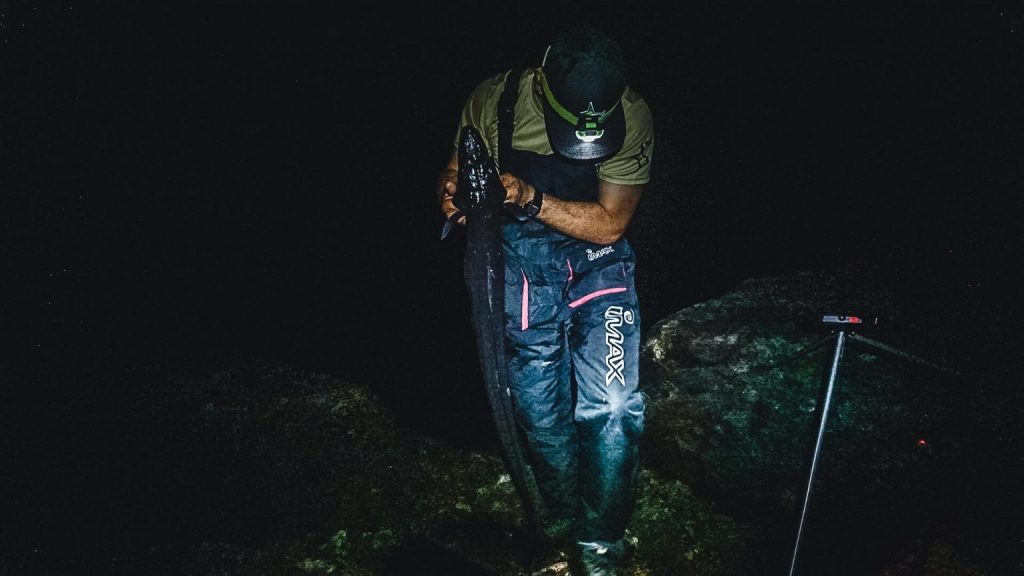
Dogfish vs Bull Huss Fishing & 15 tips
Dogfish and bull huss both spend their lives lying in the darkness on the seabed, waiting to pick up on the scent of the dead and dying. The difference between the two fish is that huss also hunt actively over rough ground – more like the stereotype of a shark. Targeting these fish is the world of big, stinky baits and night fishing with beach casters. Read on for 13 tips for fishing for these bad boys.

Photo Credit to Matilda Björklund
FISHMAG is reader supported and earns commissions when you buy through links, including from amazon.
Bull huss set up
First, a quick overview of the set-up for bull huss. The tackle for dogfish is simple – any bait you put on the bottom at night in the right place is likely to work. Bull huss require more thought.
60-80lb line on your hook lengths so their teeth don’t cut you off.
4/0 circle hooks to prevent deep hooking and maximise hook ups (make pulley pennel)
Breakaway systems on your leads for getting out of snags
Stiffer rods are used over rough ground, and we have a guide to choosing a beach casting rod.
13. Know the easy way to ID Bull Huss vs. Dogfish
There are two common species of dogfish in the UK, the Lesser Spotted Dogfish and the Bull Huss. Both belong to the Catshark family. These saltwater fish are sometimes called Rock Eel or, if you’re in a fish and chip shop, Rock Salmon. Dogfish are almost exclusively scavengers that prowl around on the seabed. They hunt in packs, which is how they gained their name. Huss on the other hand are larger, more predatory, are solitary fish.
The simple way to ID Dogfish and Bull Huss is that huss have large spots and fewer of them than dogfish. Bull Huss also grow to about twice the size of dogfish, reaching up to 150cm. The sure way to tell them apart is that dogfish have a nasal flap that meets in the middle and extends over the upper jaw, whereas in bull huss the two nasal flaps are detached and stop before reaching the upper jaw. This flap by the way is sort of like the upper lip on the fishes mouth.
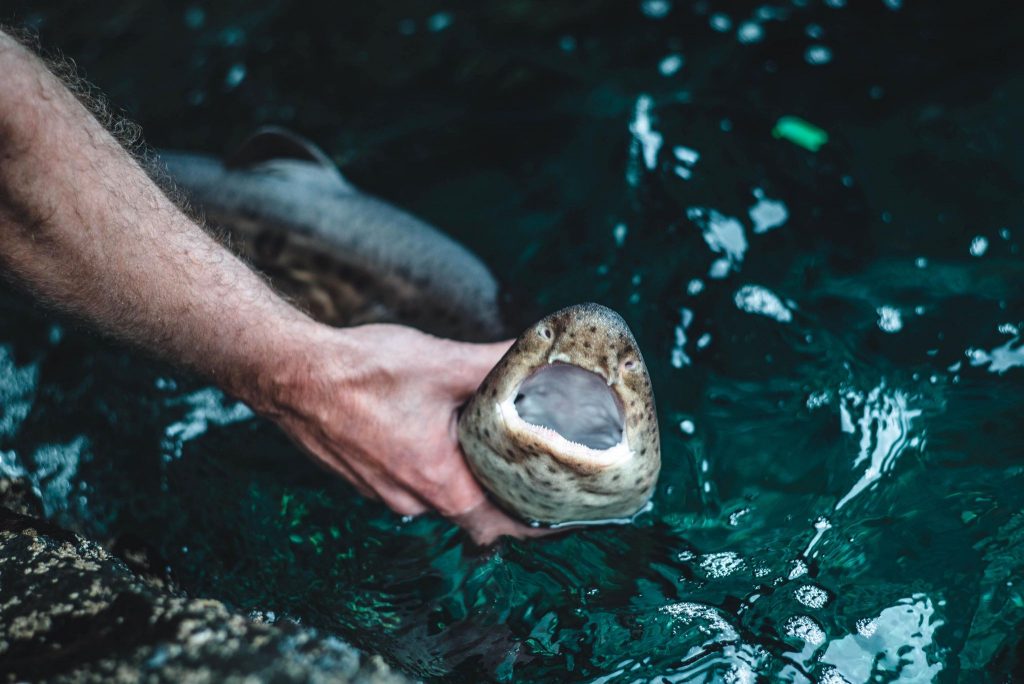
12. Dogfish have keen noses, but poor vision, so use stenching baits
The part of the brain that is responsible for sense of smell is very well developed in this species, and they catch and track down stinking baits in pitch black. They have terrible eyesight and beady little black eyes that don’t do very much at all. You’ll notice that fish which are capable of feeding by sight at night have large eyes for letting in the light. These fish are so blind in fact, that while snorkelling, it’s easy to grab a dogfish by the tail. They will immediately turn to bite you with their mouths open – they don’t need eyes to be safe from predation when you’re as rough as these fellas…
11. The best baits for bull huss and dogfish are big mackerel or squid baits
Dogfish feed on clams, scallops and crabs and fish like little dab, gobies, and injured sand eel. Bull Huss feed on whatever is available on the seabed, including crustaceans and flatfish. They also eat squid and will actively hunt and kill prey. The best baits are oily fish, such as mackerel, garfish or herring. Squid are also effective and often used in combination with mackerel.
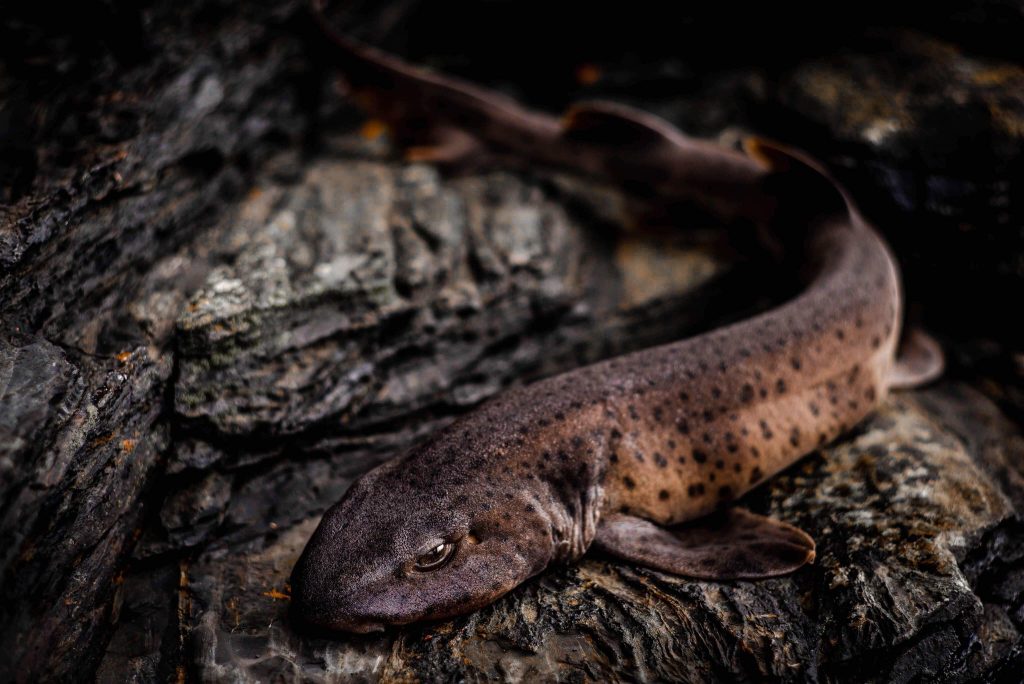
10. Bull huss feed primarily over deep rough ground, so use Navionics to find it
Unlike huss, lesser spotted dogfish (LSD) can be caught over all types of ground, from estuary mud flats to sandy, pebbly or rough ground. Lesser spotted dogfish are found between 5-100m and very common over sandy ground about as far as you can cast from the beach, where they will often sit idly on the seabed waiting to pick up on a scent. Bull huss are different. They stick to rough ground and hunt amongst the kelp. For this reason, they are usually targeted from rock marks with rough ground and deeper water. You might find FISHMAG’s rock fishing guide helpful for finding deep water rock marks near you. There is a web app called Navionics which allows you to zoom in on your local marks, just like Google maps, but it tells you how deep the water is and how rough the ground is when you click.
9. The best hooks for Bull Huss are circle hooks
Strong circle hooks are superior to straight hooks for the mouths of catsharks. This is because you’ll get solid hookups without deep hooking fish. You’ll also find in the tough mouths of these fish that fine hooks can easily be bent out of shape. This isn’t an issue if you strike quickly but this often isn’t possible when ledgering. Here are some 4/0 circle hooks suitable for huss.
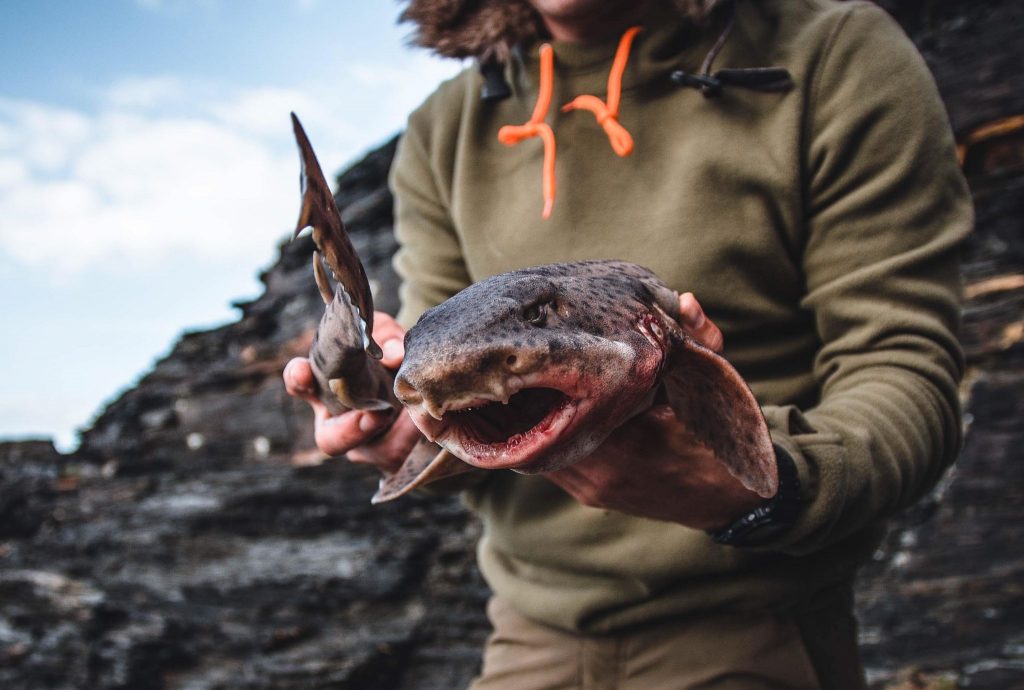
8. Treat yourself to some decent disgorgers for easy unhooking of catsharks
The fish both have extremely rough skin, which is like sandpaper to the touch, and actually used to be used for that purpose. Combine this rough skin with their muscular movements and you have a fish that’s notorious for scraping up the hands of anglers as they grip them. The solution for this is to hold the fish’s head and tail with one hand, so that the fish forms a loop. They are easily flexible enough to create this shape without forcing the fish beyond its natural range of motion. This flexibility is part of what makes them a bit tricky to unhook!
It’s also essential to have a good set of disgorgers so you can get fish back quickly. A cloth is also useful if you don’t want to handle the sandpaper skin of these fish. Dogfish were the original source of sandpaper for quite a long time, as those that have gripped them can attest.

How to Catch More Bull Huss
7. The best size hook for bull huss is 2/0 to 4/0
Some anglers upgrade to 80lb or 100lb mono for snoods as huss have sharp teeth that could potentially bite through weaker mono.
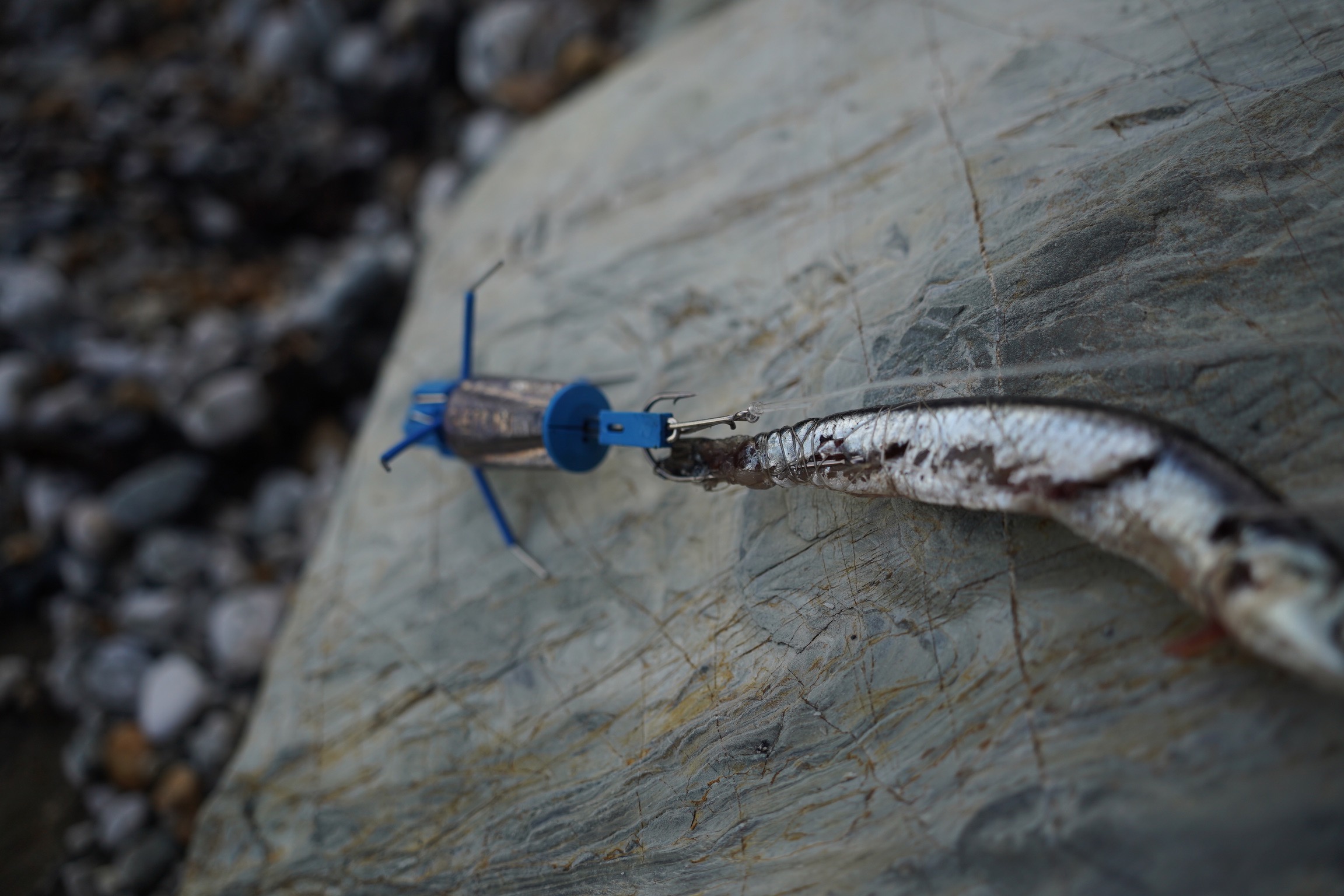
6. The best rig for bull huss is the running ledger rig
Running ledger or pulley pennel rigs are effective. Because the huss does not immediately encounter tension in the line it has more time to take the bait and get hooked properly. This is why it’s important you use circle hooks to reduce the likelihood of deep hooking a fish.
Since huss are targeted over rough ground it’s common to use rigs that allow you to avoid losing so much tackle to snags. Rotten bottoms are popular, as are breakaway leads (so if you get snagged you only lose the weight not the whole rig). There are also weak link releases and breakaway escape links.
5. Dogfish are intimate lovers
This is a bit of a side note but before we get to the dogfish tips check this out. That’s how I’d imagine snakes do it. Wild. I honestly don’t know why these fish have a reputation for being unsophisticated fish you won’t see many fish doing that, will you? Anyway back to the rigs etc…
4. The best rig for dogfish is anything that’s on the seabed at night
Size 1/0 or 2/0 hooks are best for dogfish, and larger circle hooks are most effective for huss. Avoid straight hooks. The best rig for catching dogfish is the paternoster rig with size 2-0 hooks. In areas with strong current like estuaries, it is essential to use breakaway grip leads so that your weight will stay put and not roll with the tide or current, tangling your rig.
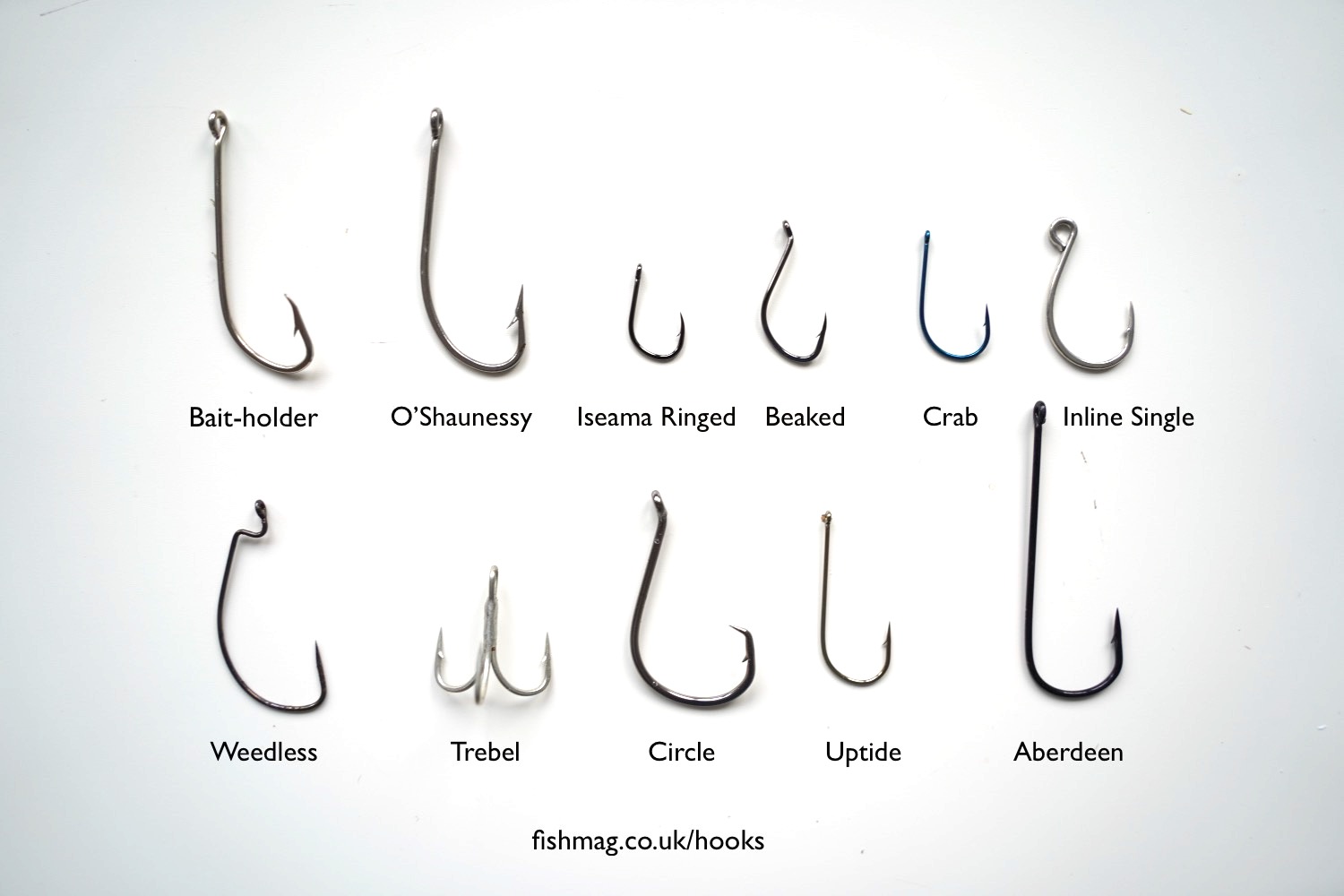
3. Bull huss are vulnerable to overfishing but dogfish are not
Bull huss are vulnerable to overfishing and are not a good eating fish for this reason. Dogfish on the other hand are one of the most plentiful and least overfished species in UK waters. If you’re going to keep any fish for the table, dogfish are a great choice for sustainability. Deep fry these bad boys or stick them in a fish pie. They’ll be grand. People pay good money for these in fish and chip shops, under the name ‘rock salmon’. Smart marketing…
2. There is no dogfish season
Dogfish are the most loyal fish in British waters, so it’s quite unfair that they have such a bad reputation amongst anglers. They are a blank saver on tough winter nights, but a pest when a whole pack of them takes every bait you throw for more exciting species. Yes, you can catch dogfish all year.
Bull huss are targeted throughout the summer. I imagine in winter they return to deeper water.
1. How to fillet & skin dogfish
- Cut off all the fins, but leave the head attached
- Cut from the anal fin to remove the guts
- Cut off the flaps on either side of the stomach
- Cut a circle around the head of the fish skin deep
- Use the knife to nick just under the skin around the neck, to create a flap of skin you can grip just behind the head
- Use pliers to grip the skin, and while holding the head pull the skin all the way down off the tail
- Turn the fish on its side, and cut the two fillets away from the spine in one smooth motion

